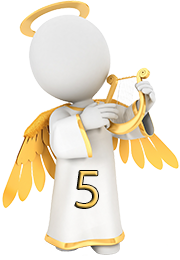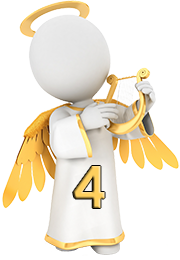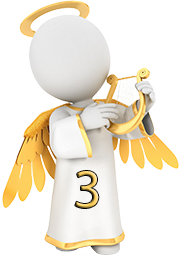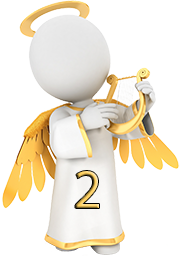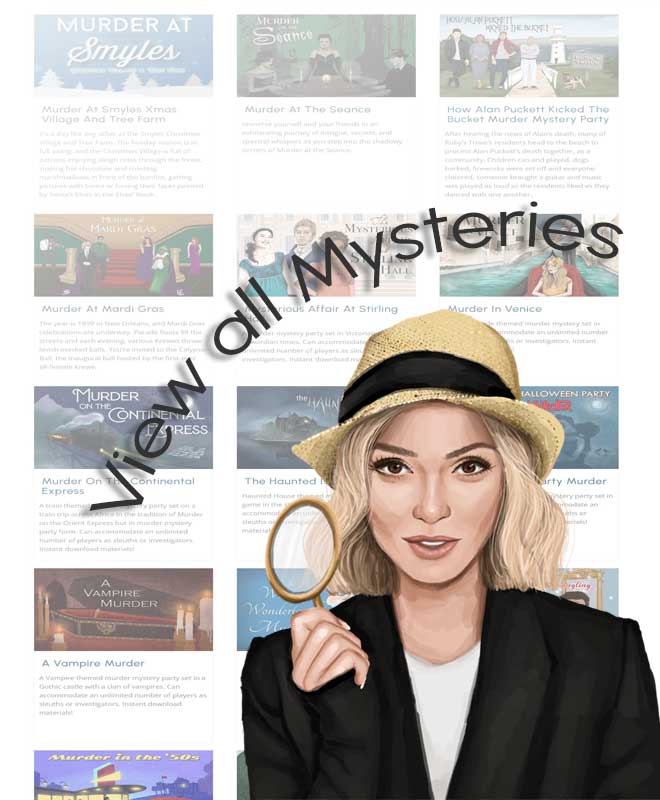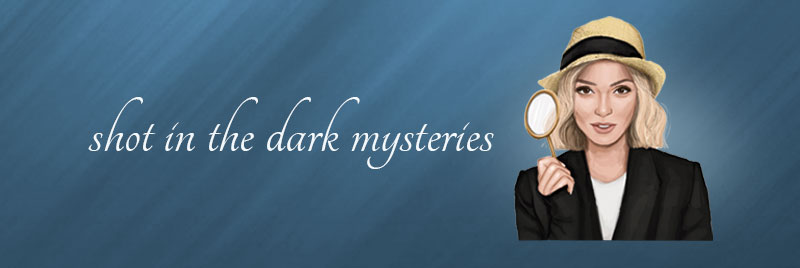Because The Mysterious Affair at Stirling Hall is designed to be played in the Regency (Georgian), Victorian or Edwardian era, the first step to deciding your costume is to find out from your host the era for which he or she are aiming. Regency (think Jane Austen) costumes are very different than that of the Edwardian (think Downton Abbey) era, and fashion progressed really quickly, so just double check with your host as to which is the appropriate time period.
Naturally, the terms “Victorian Era”, “Edwardian Era” and “Recency/Georgian Era” cover quite a large period, and fashion changed a lot over the years. We at Shot In The Dark Mysteries will explore the fashion of this huge time period by looking at two, easily research-able references from pop culture: Jane Austen and Downton Abbey.
**Disclaimer** While it could be argued that the Victorian era personified huge changes in fashion and encompassed much more than these two references (Austen and Downton Abbey) portrayed, we maintain that in the interest of preventing our clients, hosts and their guests’ heads from exploding with the multitude of costume options, we will focus on just these in this resource. If you would like to research costumes from a specific year instead of blanket eras, we encourage you to do so and wish you luck.
The Regency Era
The Regency Era covers just 9 years (1811-1820) and technically falls into the Georgian Era. If your party is going to be a Regency Era (Jane Austen) party, the dress is very distinguishable. If you haven’t yet seen A&E’s classic mini series of Pride and Prejudice (yes ladies, this is the one with a young Colin Firth’s famous dive into the lake in his white shirt), please, block out an entire day and sit down and watch it.
The Regency/Georgian (Austen) Era
Ladies Clothing from the Austen Era
Ladies, really this is our time to shine. The costumes from these time periods are classic, and whether the party is in the Regency, Victorian or Edwardian era, you’ll love wearing these fantastic clothes.
Now, in the interest of propriety there were, of course, a multitude of different dresses for different things – walking, going to court and attending a ball, the general cut of the dresses the Austen girls wore rarely changed. What did change by occasion was the type of material the dress was made from, and the hairstyle and/or hat worn for the occasion. Let’s take a look at the Bennett girls.
The empire waist was all the rage and tight up-do’s were a necessity for all moments except at bedtime. The style of dress stayed pretty much the same, but the fabrics changed depending on one’s station.The Bennetts were not well-to-do, but the Woodhouses in Emma were, so to contrast, let’s look at Gwyneth Paltrow as Emma Woodhouse:
Hats and Headwear
Depending on their station and the occasion, women wore either bonnets, hats or other hair decorations, so you have a number of options about what is worn on your head or how you wear your hair.
Men’s Clothing in the Regency/Georgian era
Men’s clothing changed only slightly throughout these eras. Guys, you’ll notice a lot of similarities between the way men dressed in the days of Austen through the 1920s. The biggest thing you need to remember to sport for this era is a puffed out chest, immaculate posture and over-inflated sense of self-importance. Manners were also a necessity. Even when being rude, men in the Austen era remained proper. For example, Mr. Darcy’s big insult to Elizabeth Bennet:
“She is tolerable; but not handsome enough to tempt me; and I am in no humour at present to give consequence to young ladies who are slighted by other men.”
That roughly translates to: “Meh, she’s alright, but not hot enough for me and I refuse to give women ignored by the other men here the time of day!”
OUCH!
And, of course, his equally-insulting first proposal:
“In vain I have struggled. It will not do. My feelings will not be repressed. You must allow me to tell you how ardently I admire and love you.”
Here’s Mr. Bennett, the girls’ father, insulting his three youngest daughters by calling them ridiculous and then saying Elizabeth is better than them:
“They have none of them much to recommend them,” replied he; “they are all silly and ignorant like other girls; but Lizzy has something more of quickness than her sisters.”
All right, now that you have the right attitude, it’s time to find you the right garb. So, let’s look at a few Austen male leads:
Here’s Mr. Darcy at a party. Notice the semi-formal attire – coat that is short in the front and long in the back, a sharp vest and a ruffly shirt underneath. The collars are up around the neck, and cuffs peek out from the jacket sleeves. Also, notice his stance: great posture, hand behind his back. He would be positively agreeable if not for the scowl on his face! (Yes, in the Recency era, this expression was the equivalent of flipping everyone off). Dare we mention the totally awesome sideburns? If you have the werewithall, nothing says “Regency” like Darcy’s classic sideburns.
Here’s Darcy in a slightly different look: short/long jacket: check. Vest: check. Cuffs: check. Ruffles and collar: check. Sideburns: check.
So, how did these guys look when they were completely casual?
Yup, here’s Mr. Knightly cutting loose and going casual in his long/short brown jacket, khaki riding pants, tall riding boots, vest and high collar – sans ruffle! (for more on shoes, please see below)
The look you choose depends on your host’s vision for their party and your character.
Edwardian Era
Ladies Clothing in the Edwardian Era
The end of World War I brought with it a huge change in mentality and propriety. In many cases, during the war, station had to be overlooked in the interest of simple humanity. This gave way to what ultimately became the Roaring 20’s – or the Flapper Era (one of our favourites, and clearly yours too, since A Flapper Murder at the 1920’s Speakeasy is our long-reigning top selling murder mystery party game!) This was also a time of great strides in the early days of the women’s movement, which saw ladies’ fashion designed more to enhance beauty instead of hiding under layers upon layers of fabric.
In stark conrast to the popular cut of the dresses in the Austen era, the Edwardian Era differed quite a bit. While we still see hints of past fashion, new cuts of dresses and, in some cases even slacks for women (riding trousers mostly) made an appearance.
High society still wore lushious, pricey fabrics compared to the others in society. For example, here’s Kate Winslet (once again!) in formal dinner attire in Titanic, which was, of course, set in 1912.
Notice the extravagent detail on her dress, the rich fabric, more revealing (yet still modest) neckline and, of course, the long white dinner gloves, which were only removed to eat. Her hair is also noteworthy; this era still demanded women have up-do’s for formal situations.
Rose’s white dress is another great example of how women’s fashion played with more figure-flattering style:
and let’s take a closer peek at that fantastic hat!
And now, the girls from Downton Abbey:
This Downton Abbey Garden Party attire is a great example of the flexibility of fashion in the era. The hats and necklines vary depending on each of the Crawley daughters’ style.
Here they are in more formal attire, most likely dressed for dinner, in rich fabrics, long gloves and up-do’s.
Here’s an example of the differing styles of the time. While Edith wears a more traditional look, Mary’s dress is more contemporary and (at the time) age-appropriate, while Sybil is wearing a dress that clearly shows how women’s fashion is progressing toward the Roaring 20’s/Flapper era. Because The Mysterious Affair At Stirling Hallhas 3 generations of women in some versions, we can’t wrap up a look at women’s fashion without looking at the difference of dress between the generations of women on Downton Abbey.
Lady Violet wears a very traditional dress, popular in the days when she was young. Rich fabric, lots of layers, high collar, intricate hat. Lady Cora is wearing a great example of how a woman of means can wear a snug, figure-flattering dress (cream was making a comeback!) and large hat, while Lady Mary shows how women of her generation relaxed in propriety with her posture, and wears a much more delicate dress in a lighter fabric. Classic.
Men’s Clothing In The Edwardian Era
In stark contrast to the puffed-out chests of the Austen Era, Edwardian men relaxed – sort of. Propriety of speech between men and women eased slightly by this point, but men still retained their impeccable posture.
Suits (tuxes, in our era) continued to be the popular fashion choice for men in the Edwardian era, with minor differences including a lack of ruffles (was that a sigh of relief I heard, guys?) and the cut of jackets and slacks. For your visual costume inspiration, let’s look at Cal from Titanic in his full suit (and villainous smile!).
The proper attire for men at dinner included a lot of black and white, as you’ll see when we compare Cal here with the guys from Downton. Black jacket, white vest, white shirt, white bow tie with the classic retro men’s high collar. Arrogant lean, devlish smile, back-combed hair. Did they have gel back then? We’re not sure, but it looks like Cal is sporting some sort of product in his hair to give him that impecable coif.
Here are Mathew Crawley and Lord Grantham sporting almost the exact same look: Dinner Whites. Lord Grantham has a slightly different cut to his jacket with more buttons – again I believe a nod to the style of his generation verses that of his heir, whose cut is more modern – er… slightly. Mathew’s collar is shorter, bow tie smaller, but essentially the dinner/party look for all three men from around this time is the same.
Shoes
Women’s Shoes
Women’s shoes in the early 1900’s varied, but a fashionable style between 1897 and 1918 (the Ragtime Era) was a wider heel base and pointed toe, like this:
Men’s Shoes
Guys, you’re about to get off a little easy on the shoes front. In fact, many of the styles from bygone eras have made a come back, or are still around, and can be purchased pretty much anywhere dress shoes are sold.
Servants In Edwardian Times
Servant attire did not change much from the Georgian to the Edwardian Era. The servants, or those “Below The Stairs” dressed just as distinctly as their upstairs counterparts. The rules servants had to follow were just as complicated as those of a person of status – perhaps even more so. Servants were to be neither seen, nor heard, but naturally with the number of servants outnumbering those they served, this wasn’t always possible.
Female Servants
Female servants’ uniforms were pretty standard during this era. Black or grey dress with white aprons was generally the attire they wore. Let’s look at Anna, who wears a grey dress while doing housework and a black dress while tending to Lady Mary and at dinner.
Male Servants
In Edwardian times, the male servants dressed very similar to their masters. Of course, the fabrics used were less rich than that of the lord of the manor, they were the same idea. Here’s Thomas, a footman from Downton Abbey, with the same style of jacket, vest and bow tie as those he serves.
From Titanic, Cal’s valet and “henchman” was called Spicer Lovejoy (betcha didn’t know that!) Here’s a great example of how he dressed like the man he served.
Manners
Manners in the Edwardian era were only slightly less important than in the Austen Regency/Georgian era, and insults had to be just as proper. In Downton Abbey, Lord Grantham has two quick yet effective ways to end a conversation. His use of the words “Good day!” in a forceful manner tell the people to whom he speaks the conversation is over with no question.
And there was, of course, the time he broke up a fist fight between Matthew and Sir Richard Carlisle, demanding the latter leave by spitting: “I presume you will be leaving in the morning, Sir Richard. What time should I order your car?”
Women, while still expected to be proper, are not always so in this era, which makes Lady Violet, The Dowager Countess, one of the most quotable characters of all time.


